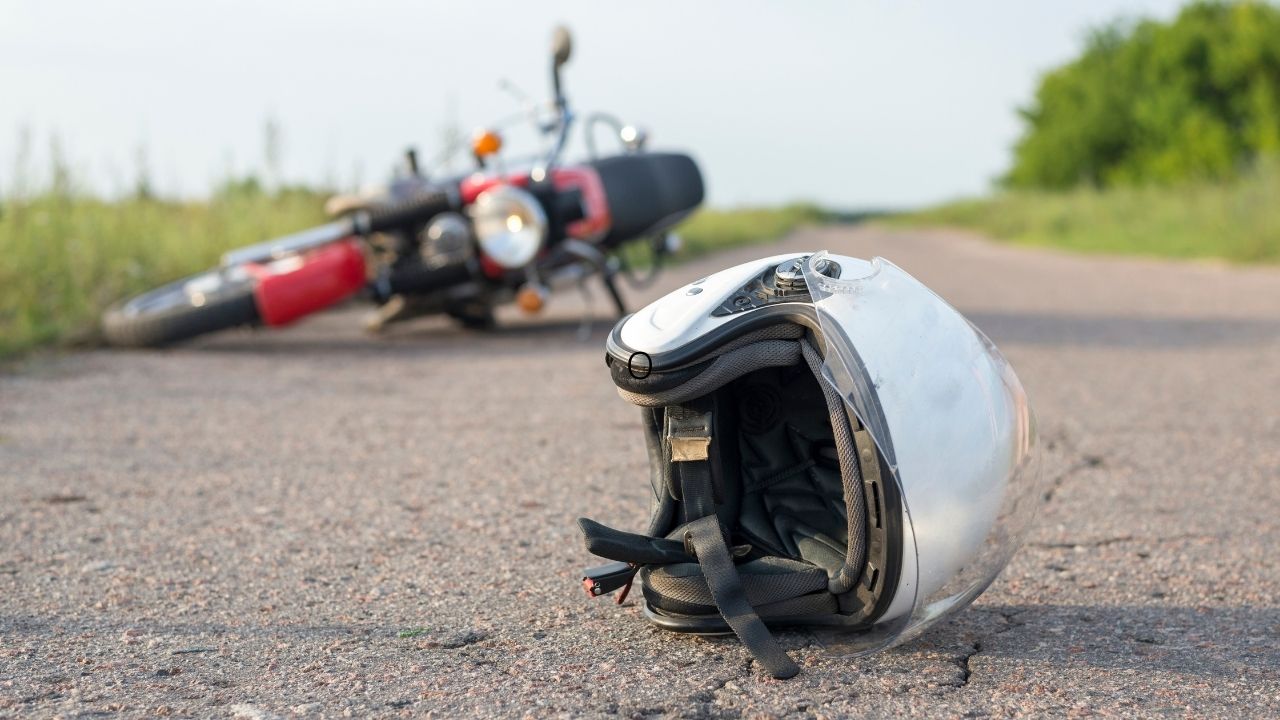Lifestyle
Celebrities Who Were Involved in Motorcycle Accidents

Most people think of celebrities as magical, mythical creatures who can do no wrong. The truth is, though, your favorite athletes, actors, and singers are just like you, and they make mistakes all the time.
Some mistakes, though, are costlier than others. Take, for example, those celebrities who were involved in serious motorcycle accidents. It comes as no surprise that the effects and repercussions of any kind of motor vehicle accident can be significant, and celebrities are no exception.
If you were recently involved in a crash like this and are thinking of working with a motorcycle accident attorney to file a case, you might be feeling isolated and alone. Reviewing the following list of celebrities should help prove that this kind of accident can happen to anyone.
4 Celebrities that Were Hurt in a Motorcycle Crash
1. Keanu Reeves
Many people think Keanu Reeves is invincible. After all, it’s hard not to when you consider some of the legendary roles he’s played, including Neo from the Matrix trilogy to John Wick in the John Wick franchise.
The truth is, though, Mr. Reeves is only human, and his fate was tested in 1988, when he was involved in a motorcycle crash. Although he didn’t sustain major injuries, it would appear that Keanu didn’t quite learn his lesson, as he was involved in a second crash in 1996. This time, he suffered a broken ankle. Thankfully, it appears as if he’s picked up some safer driving habits, as he hasn’t been in an accident since.
2. Billy Idol
Rock legend Billy Idol is known for playing it fast and loose. But in 1990, his seemingly reckless behavior caught up with him. Billy was riding his motorcycle when he suddenly crashed, and the results of the accident were devastating. He sustained leg injuries so bad, doctors weren’t sure if he would be able to keep his leg.
Luckily, Billy was able to avoid amputation and made a full recovery. Although he does continue to ride his motorcycle, he seems to do so now with much greater care and responsibility.
3. Bob Dylan
Legendary musician Bob Dylan is known for spreading messages of peace, love, and patience. Unfortunately, it seems as though these virtues didn’t do him much good in 1966, which is the year when he was involved in a near-deadly motorcycle crash.
Interestingly, there was never an official police report filed for the crash — this is something all personal injury attorneys advise against, as a police report serves as crucial evidence when filing a claim.
Luckily, Mr. Dylan survived his crash. Although he did need a break from his wildly successful career to recover, he eventually went back to music.
4. Arnold Schwarzenegger
This bodybuilder turned actor turned governor is known for his strength and physical resilience. The Terminator star put these attributes to good use in 2006, when he was involved in a serious motorcycle crash.
Schwarzenegger was hit by a car backing out of a driveway and suffered a significant lip injury. His son, Patrick, was riding with him in a sidecar when the crash occurred. Luckily, he wasn’t hurt badly. He walked away from the accident with only a few minor injuries that quickly healed.
Recovering After a Crash
As you can see, no one is immune to bad luck — not even A-list celebrities. But if your accident was brought on by more than bad luck, working with an attorney is crucial. Your lawyer will file a claim against the liable party to help you recover the compensation you deserve for your damages. That way, you can spend less time worrying about the financial burden of your accident and more time on getting better.
Lifestyle
How Magic Moment Resort Became the Pioneer of a New Era: The First-Ever Dazzler Select by Wyndham

In Central Florida’s packed landscape of family hotels and theme park lodgings, a unique kind of property has emerged. Magic Moment Resort & Kids Club in Orlando is earning attention from traveling families for a simple reason. It delivers joy, warmth, and convenience at a smart value that keeps Disney dreams accessible rather than overwhelming.
By joining Wyndham, Magic Moment Resort unlocks the strength of a global powerhouse, gaining worldwide visibility, advanced technology, and access to Wyndham Rewards, the largest hotel loyalty program on the planet. This strategic move expands its reach, builds guest trust, and amplifies its impact, all while preserving the unique identity that sets it apart.
Just a short drive from the gates of Walt Disney World, the resort sits along the palm-framed stretch of West Irlo Bronson Memorial Highway. The location has long been known for its tourism bustle, yet Magic Moment has carved out a softer identity. It feels playful and colorful, but also intentional. It is designed by a family for other families, and that perspective shapes every experience on the property.
A Philosophy Rooted in Family Connection
Magic Moment Resort was built with a belief often forgotten in today’s tourism industry. Family vacations should feel uplifting instead of stressful, and affordability should not come at the expense of comfort or creativity.
Check-in feels more personal than transactional. Parents arrive with strollers, snacks, and tired children. The staff seems to understand this rhythm instinctively. The energy is warm, the pace is easy, and the tone is set long before anyone even enters the room.
Unlike competing hotels that charge a steep premium for proximity to the parks, Magic Moment focuses on smart value without compromise. Its pricing strategy is refreshingly straightforward. Families can stay five minutes from Disney without draining their travel budgets. For many guests, that difference helps shift resources from hotel costs to experiences. It means more character breakfasts, more souvenirs, and more freedom to enjoy the parks without financial tension following every decision.
Spaces Designed for Children and Considerate of Parents
Magic Moment is filled with color, but nothing feels overstimulating. Instead, the resort offers a sense of wonder scaled to a child’s imagination.
The themed family rooms are a highlight. Children step into rooms that feel lighthearted and whimsical, yet parents appreciate that they are also functional and comfortable. It is the atmosphere of a themed suite without the theme park price.
Its Kids Club and Teens Club reflect that same thoughtful balance. These spaces invite exploration and creativity for children and provide a nurturing level of supervision. Parents can enjoy an hour by the heated pool, relax in a shaded cabana, or simply take a quiet moment while knowing their children are safe and engaged.
The resort’s grounds encourage slow mornings and gentle afternoons.There’s a 30,000 sqf outdoor playground as well as peaceful corners for parents. Importantly, families are not asked to pay additional fees to enjoy them. Magic Moment’s amenities feel generous rather than transactional.
Unforgettable Days at the Parks
For families navigating a Disney vacation, convenience is often the true luxury. Magic Moment delivers this with a complimentary delicious hot breakfast that encourages everyone to sit and enjoy the start of the day rather than rush through it.
Transportation to the parks is included, which removes one of the most common stress points for visiting families. There is no parking lot maze and no long lines at the toll booths. Guests simply board the shuttle and begin their day with ease.
When the sun sets and everyone returns from a day of rides and parades, the resort becomes a place to unwind. Children head straight for the pool. Parents sip Starbucks coffee. The atmosphere is relaxed and bright, and the resort feels like an extension of the Disney experience rather than a pause from it.
A Value That Resonates with Families
What truly elevates Magic Moment is the balance it achieves between smart value and experience. The resort has cultivated a loyal following because guests feel they receive more than they pay for. More thoughtful design. More space for connection. More comfort without excess.
Affordability here does not signal minimalism. Instead, it allows families to breathe. It creates space for shared moments that are often overlooked in the rush of theme-park vacations. Children play freely. Parents unwind without guilt. Families spend more time together and less time navigating logistics.
A Resort Built with Heart
Magic Moment Resort & Kids Club stands out in a region overflowing with hospitality options. Its charm is not rooted in extravagance. It is grounded in sincerity. It reflects the belief that family travel should feel joyful, accessible, and full of color.
For families planning a Disney visit, it represents more than a place to sleep. It is a retreat where memories can form in the quiet moments as much as in the thrilling ones.
At Magic Moment, the greatest luxury is not an amenity. It is the feeling of being exactly where you are meant to be, together.
-

 Tech5 years ago
Tech5 years agoEffuel Reviews (2021) – Effuel ECO OBD2 Saves Fuel, and Reduce Gas Cost? Effuel Customer Reviews
-

 Tech6 years ago
Tech6 years agoBosch Power Tools India Launches ‘Cordless Matlab Bosch’ Campaign to Demonstrate the Power of Cordless
-

 Lifestyle6 years ago
Lifestyle6 years agoCatholic Cases App brings Church’s Moral Teachings to Androids and iPhones
-

 Lifestyle5 years ago
Lifestyle5 years agoEast Side Hype x Billionaire Boys Club. Hottest New Streetwear Releases in Utah.
-

 Tech7 years ago
Tech7 years agoCloud Buyers & Investors to Profit in the Future
-

 Lifestyle5 years ago
Lifestyle5 years agoThe Midas of Cosmetic Dermatology: Dr. Simon Ourian
-

 Health7 years ago
Health7 years agoCBDistillery Review: Is it a scam?
-

 Entertainment6 years ago
Entertainment6 years agoAvengers Endgame now Available on 123Movies for Download & Streaming for Free
